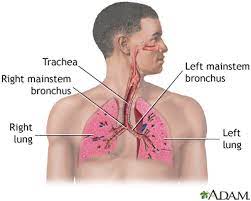Walking Pneumonia

What is Walking Pneumonia?
Walking pneumonia, also known as atypical pneumonia, is a milder form of pneumonia that typically does not require hospitalization or bed rest. It is called "walking pneumonia" because individuals with this condition are often able to continue their daily activities, such as walking, despite having pneumonia. Walking pneumonia is usually caused by atypical bacteria, such as Mycoplasma pneumoniae, Chlamydophila pneumoniae, or Legionella pneumophila, rather than the typical bacteria associated with more severe cases of pneumonia.
Who's at risk for Walking Pneumonia?
Walking pneumonia can affect individuals of all ages, but certain factors may increase the risk of developing the condition, including:
- Age: It is more common in school-aged children and young adults.
- Close quarters: Living or working in close quarters, such as dormitories, military barracks, or nursing homes, can increase the risk of exposure to respiratory infections.
- Weakened immune system: Individuals with weakened immune systems, such as those with HIV/AIDS, undergoing chemotherapy, or taking immunosuppressive medications, may be more susceptible to walking pneumonia.
- Smokers: Smoking weakens the immune system and damages the respiratory system, making individuals more prone to respiratory infections, including walking pneumonia.
What causes Walking Pneumonia?
Walking pneumonia is usually caused by atypical bacteria, such as Mycoplasma pneumoniae, Chlamydophila pneumoniae, or Legionella pneumophila. These bacteria can spread through respiratory droplets when an infected person coughs or sneezes. Close contact with an infected individual or exposure to contaminated surfaces may also contribute to transmission.
How does Walking Pneumonia start?
Walking pneumonia typically starts with mild respiratory symptoms that gradually worsen over time. The onset of symptoms is usually gradual and can be mistaken for a common cold or upper respiratory infection. Initially, individuals may experience symptoms such as a sore throat, nasal congestion, mild cough, or low-grade fever. As the infection progresses, symptoms may include persistent cough, chest discomfort, fatigue, headache, and occasionally, shortness of breath.
What are the symptoms of Walking Pneumonia?
The symptoms of walking pneumonia can vary, but common signs and symptoms may include:
- Mild cough that may produce phlegm or mucus
- Sore throat
- Nasal congestion
- Low-grade fever
- Headache
- Fatigue or feeling generally unwell
- Chest discomfort, which may worsen with deep breaths or coughing
- Occasionally, shortness of breath or wheezing
It's important to note that symptoms can be mild and may not always be present in every case of walking pneumonia.
How is Walking Pneumonia diagnosed?
Walking pneumonia is diagnosed based on a combination of clinical symptoms, medical history, and diagnostic tests. A healthcare professional, typically a primary care physician, may perform a physical examination, listen to the lungs with a stethoscope, and ask about symptoms and medical history.
Diagnostic tests that may be used to confirm the diagnosis include:
- Chest X-ray: A chest X-ray can help identify any abnormalities in the lungs, although findings may be subtle in cases of walking pneumonia.
- Blood tests: Blood tests, such as a complete blood count (CBC) or tests to detect specific antibodies, may be performed to assess the immune response and determine the presence of bacterial or viral infection.
In some cases, a sputum culture or other respiratory samples may be collected to identify the specific bacteria causing the infection.
How can Walking Pneumonia be treated?
Walking pneumonia is often treated with antibiotics to target the underlying bacterial infection. The choice of antibiotic depends on the suspected or confirmed bacteria causing the infection and may include macrolides (such as azithromycin or clarithromycin), tetracyclines (such as doxycycline), or fluoroquinolones (such as levofloxacin). It's important to follow the prescribed treatment regimen and complete the full course of antibiotics as directed by a healthcare professional.
In addition to antibiotics, supportive measures can help manage the symptoms of walking pneumonia. These may include getting plenty of rest, staying hydrated, using over-the-counter pain relievers (such as acetaminophen or ibuprofen) to alleviate discomfort or fever, and using cough suppressants or expectorants as recommended by a healthcare professional.
What complications may occur with Walking Pneumonia?
In most cases, walking pneumonia is a mild illness that resolves with appropriate treatment and rest. However, if left untreated or if complications arise, walking pneumonia can lead to more severe respiratory infections, such as bronchitis or pneumonia, particularly in individuals with weakened immune systems.
How can I prevent Walking Pneumonia?
To reduce the risk of contracting walking pneumonia, consider the following preventive measures:
- Practice good hygiene: Wash your hands regularly with soap and water or use hand sanitizer, especially after being in crowded places or touching surfaces that may be contaminated.
- Cover your mouth and nose: Use a tissue or your elbow to cover your mouth and nose when coughing or sneezing, and dispose of used tissues properly.
- Avoid close contact: Limit close contact with individuals who have respiratory infections, and maintain a safe distance from people who are coughing or sneezing.
- Stay home when sick: If you are experiencing respiratory symptoms, such as a cough or sore throat, it's important to stay home to prevent the spread of infection to others.
- Maintain a healthy lifestyle: Eating a balanced diet, exercising regularly, and getting enough sleep can help support a healthy immune system and reduce the risk of respiratory infections.
It's worth noting that some cases of walking pneumonia may still occur despite taking preventive measures, as the bacteria causing the infection can be easily transmitted.
Where can I go for more information on Walking Pneumonia?
For more information on walking pneumonia, reputable sources such as the Centers for Disease Control and Prevention (CDC), the American Lung Association, the Mayo Clinic, or other trusted healthcare institutions can provide valuable information and resources. Consulting with a healthcare professional, such as a primary care physician, can also provide personalized information and guidance specific to an individual's situation.

